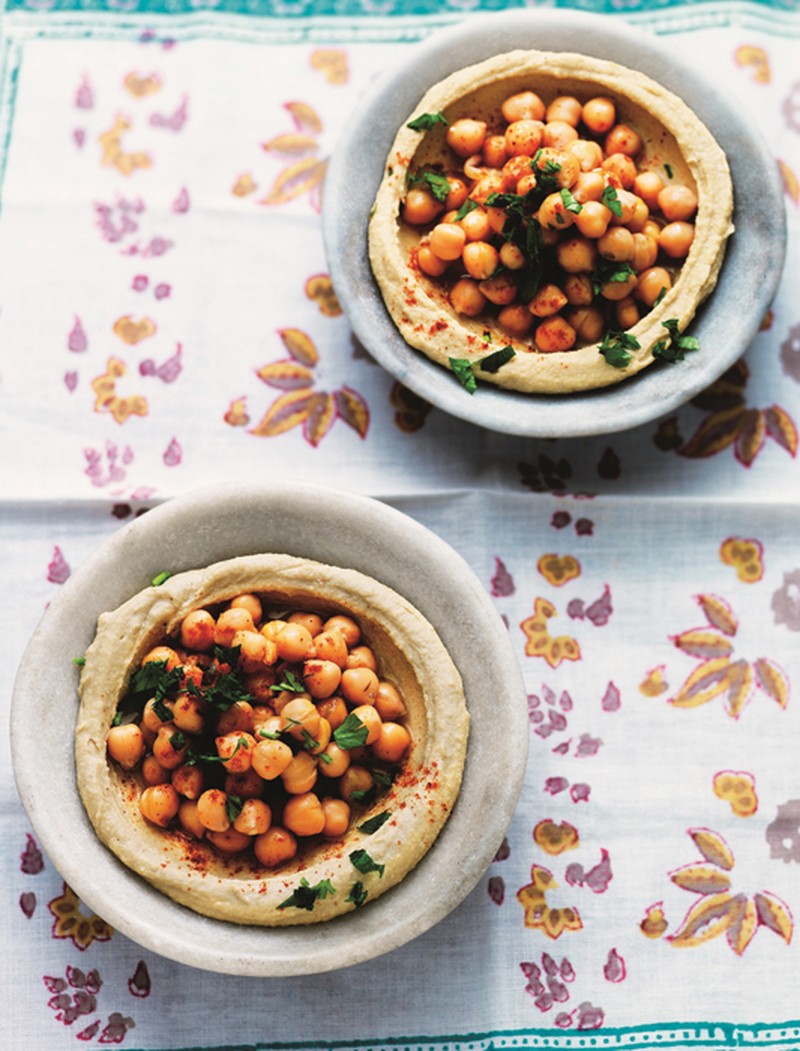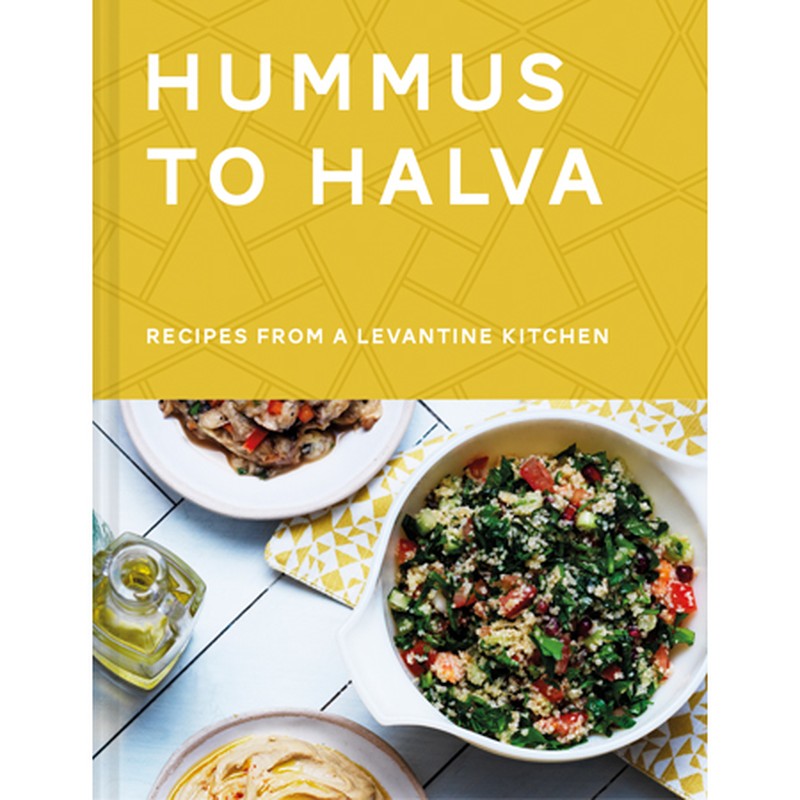Hummus With Slow-Cooked Chickpeas

For the hummus, tip the chickpeas into a bowl and cover with plenty of cold water (they will expand as they soak). Cover and leave to soak – there’s no need to refrigerate them – for 12 hours, or overnight. There aren’t any shortcuts to this, just aim to soak them the day before.
Drain the chickpeas and put into a medium saucepan. Pour in the fresh measured cold water so that the water only covers the chickpeas by about 2cm. Stir in the bicarbonate of soda, then bring the water to the boil. Don’t be tempted to add salt at this stage as it can make the chickpeas tough. Keep a watchful eye as it comes to the boil as it can easily boil over.
Skim off any scum with a slotted spoon. Cook over a medium heat for 1–1.5 hours until the chickpeas are very soft. If the water level seems to be going down too quickly then partially cover the pan with a lid to help reduce evaporation, but don’t cover the top completely or the pan will boil over. Keep an eye on the water level and top up with a little extra boiling water from the kettle if needed, especially towards the end of cooking. Stir from time to time, stirring more towards the end of cooking, as the chickpeas take on a soupy texture as there is less water in the pan.
Once cooked, drain the liquid if there is a lot, but don’t throw it away – keep it for later to adjust the consistency. Spread the chickpeas over the surface of a large roasting tin and leave to cool.
You should have about 1.25kg cooked chickpeas. Purée in batches with any liquid from the roasting tin in a food processor, adding the tahini, lemon juice and salt to taste until you have a creamy, velvety smooth consistency. Adjust the consistency with some of the reserved cooking liquid or water. You may need to do this in batches depending on the size of your machine. Make sure it’s nice and thick, but smooth.
Transfer the hummus to a large plastic container, spread it level, then press on a well-fitting lid. Chill until needed.
Drain the soaked chickpeas, put into a medium saucepan and pour in the water so that the chickpeas are covered by about 2cm. Add the oil and cumin and bring to the boil. Skim off any scum, then partially cover with a lid and cook over a medium heat for 40–60 minutes until the chickpeas are tender but still a good shape. Drain in a sieve set over a bowl to catch the cooking liquid.
Spread the hummus over 4 serving plates and make a small well in the middle. Add a few spoonfuls of chickpeas to each well. Dress each portion with lots of olive oil, lemon juice and tahini sauce, then season to taste. Moisten with some of the reserved cooking liquid, if necessary and top with a little paprika and chopped parsley.
Serving Tip: Quarter a white onion and soak in a bowl of water for 30 minutes. Drain and peel off the individual layers, then use them to scoop up the hummus and chickpeas.
Hummus to Halva: Recipes from a Levantine Kitchen by Ronen Givon & Christian Mouysset, published by Pavilion Books.
DISCLAIMER: We endeavour to always credit the correct original source of every image we use. If you think a credit may be incorrect, please contact us at info@sheerluxe.com.


